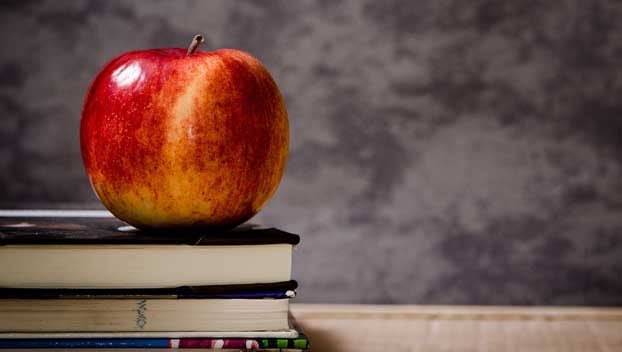From robotics to 3-D printers, Concordia Parish academy goes high tech
Published 12:01 am Tuesday, February 10, 2015

Seventh graders Ayanla Greaten, 13, A’Niya Sullivan, 13, and Makenzie Thompson, 13, all surround a MacBook at Concordia Parish Academy of Math, Science and Technology, a magnet program that excels in technology for its students by using iPads, MacBooks, robotics and a 3-D printer. (Devonte Demby / The Natchez Democrat)
RIDGECREST — From iPads to 3-D printers, Concordia Parish Academy of Math, Science and Technology puts the tech in technology.
The magnet program, which operates at the former Ridgecrest school site, tries to incorporate technology in every learning experience.
The school uses iPads for every grade level, but the seventh graders use MacBooks.
Math, science and robotics teacher Brandon Rowe said his students get the opportunity to work from MacBooks and simulator programs, all of which make his job easier.
“I think the main difference here is the accessibility of the laptops,” Rowe said. “The students not only have them here at school, but home as well. It makes it easier for the teacher to make assignments, and it makes it more creative for us because we are not limited.”
Sixth grader Trace Kemp, 12, was in an enrichment class when he was told to log onto Jason.org, a website that provides multimedia curricular experiences in science, technology, engineering and math.
“It’s real task oriented,” Rowe said. “This brings the real world to them.”
While working on Jason.org, the students will use their worksheets to solve the simulated problems on the program, as if they were engineers, Rowe said.
Kemp’s tasks consisted of moving energy from one place to another. After Kemp placed the energy in its proper setting, an animation would follow, a feature that he enjoys.
“The fact that it’s like a game makes doing this really fun,” Kemp said.
Seventh graders Ayanla Greaten, 13, A’Niya Sullivan, 13, and Makenzie Thompson, 13, all worked on their favorite device, the MacBook.
“For us, using the Macbooks makes doing essays quicker instead of having to write them all the time,” Thompson said.
The students use Keynote, a program that allows students to mirror their presentations from the MacBook to the Smart Board.
But for Tech Facilitator Jessica Tyler, Gaggle and the school’s 3-D printer shine above any and all tech aspects off the school.
Gaggle is a website that provides safe online learning tools for students and their teachers.
“Grades four through seventh currently use Gaggle,” Tyler said. “The students have their own blog, their own email addresses and the teachers get to post discussion boards. We’re slowly but surely letting go of the paper.”
Tyler said most students get their homework assignments through Gaggle.
But everything is safe.
“What I like about Gaggle is that they have an actual human resource department, which monitors what’s going on in the emails and chat sessions,” he said.
The school also uses their 3-D printer, the Makerbot Replicator Mini, to design robotic parts and figure models for class.
“Once you load in the file from the computer, it will make a base and build the figure from the bottom up,” Tyler said.
However, depending on the model, the program can take up to two hours to create its subject, which is no issue for Tyler.
“We have a camera that allows you to watch it remotely so you don’t have to be there to monitor it,” Tyler said. “You can set it to print, walk away and you can monitor it from an iPad app.”
Tyler said the students have made finger models for Biology and even made a pumpkin for Halloween.
“It’s main purpose was for the robotics program, and since we work with a lot of legos some pieces can get lost,” Tyler said. “But with the printer, we can go into this program and make the piece over again.”
Principal Nancy Anders said a class did research on the pyramids when a teacher decided to make a model of one using the printer.
“It keeps the kids engaged and raises learning to another level,” Anders said. “They are constantly doing projects, thinking and doing research.”






